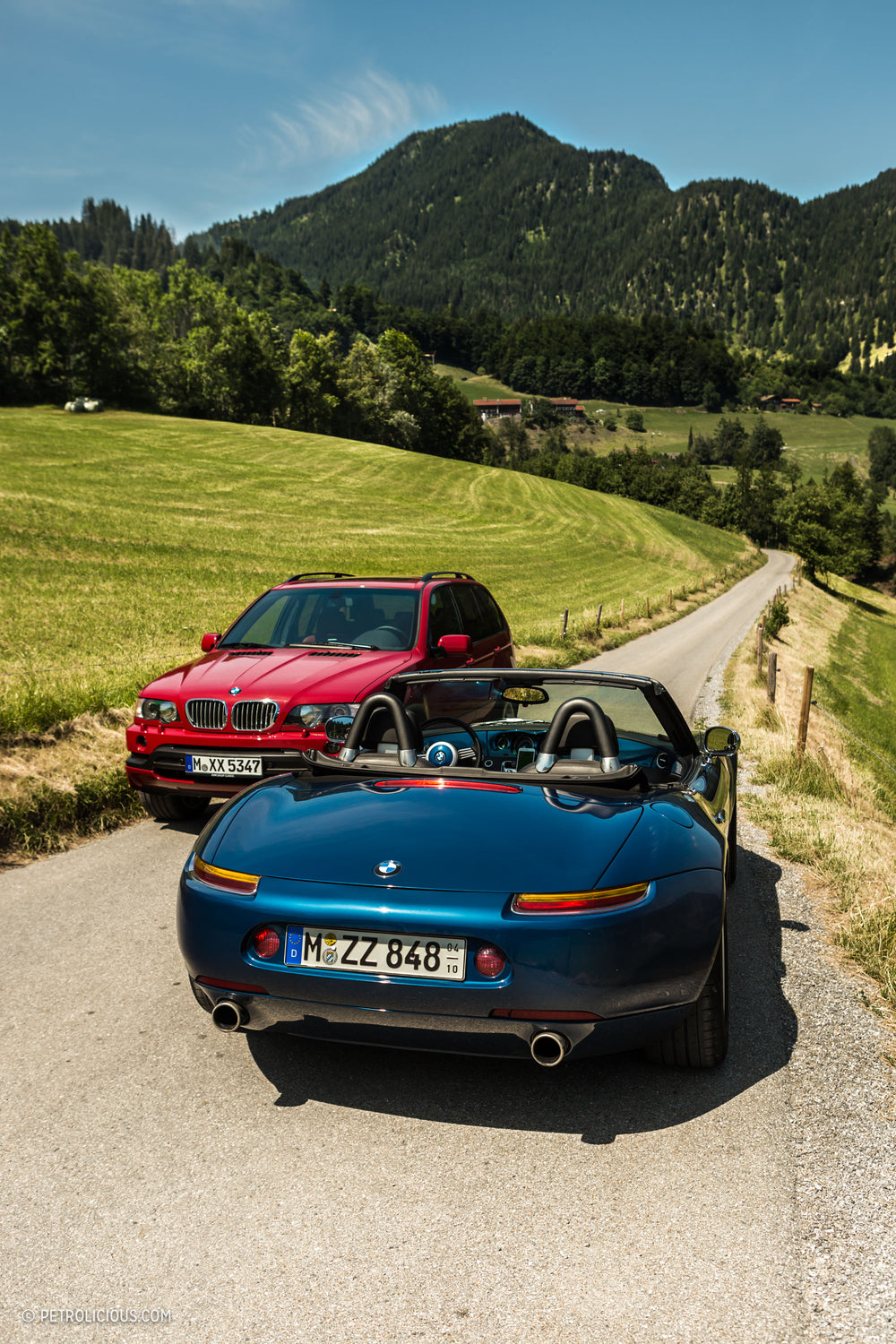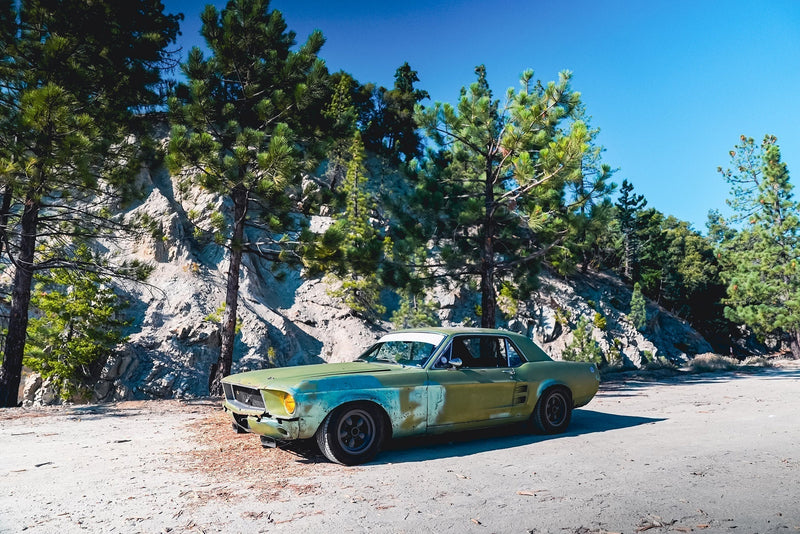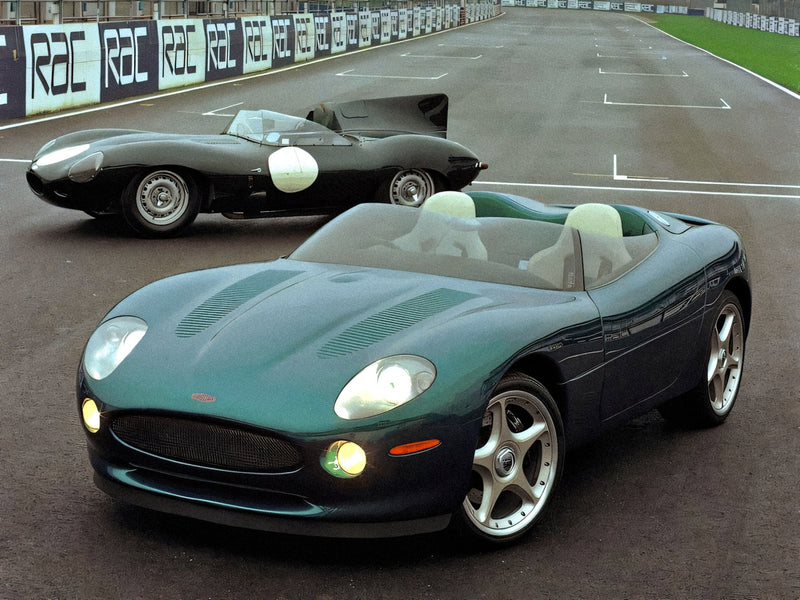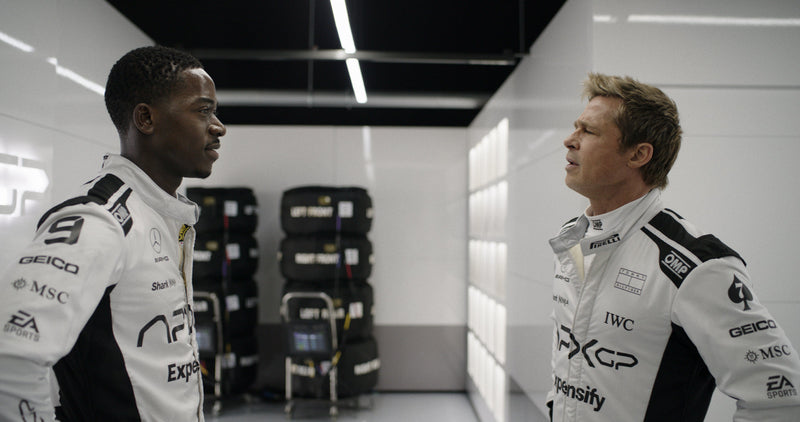Photography by Alex Sobran // Cars and experience provided by BMW Classic
If you spend enough time with a devotee of a particular badge—a Ferrari fanboy, a Porschephile, an Alfaholic, somebody whose whole thing is in fact “a Jeep thing”—there’s a good chance you’ll have to endure some fervid rambling about how their favorite manufacturer lost its way. It’s practically a given; the deeper the love we have for the companies that built our favorite cars, the greater the potential for those companies to disappoint us in their efforts to evolve.
Change is constant, and especially so if you’re in the business of selling stuff. But regardless of the impetus for the pivot between what was and what is, the conversation usually degrades into some vague dichotomy between good-old and new-fangled. It’s a trite comparison stoked by worn out arguments from both camps. It’s easy to whinge about the technological and aesthetic bloat of modern cars if you’re swayed by the older ones, but it’s at least as easy to paint the past as inferior if you’re a stat-citing acolyte of quantifiable progress.





Neither party is objectively wrong, and depending on the representatives you ask, the line in the sand can be drawn just about anywhere on the beach (“I miss the ability to turn traction control all the way off” versus, “I miss carburetors”). But for Bimmerheads who love saying “analog,” “telepathic,” “rear-wheel drive,” and “naturally aspirated,” there seems to be a general consensus on where to drag the stick.
They are quick to say that the BMWs of the early 2000s are the last ones that deserve the marketing tagline. There is some credibility in touting the E46 M3, E39 M5, E38 7-Series et al as the end of an era of ultimate driving machines, but it’s tough to shake the suspicion that this line of reasoning is couched in these cars’ conservative styling just as much as it is in their driving dynamics. Cases in point, you don’t have to think an X6M is pretty in order to enjoy the absurdity of out-pacing sports cars with one on the Autobahn. Let an E30 diehard test drive an M4 and see if he doesn’t come back with a bigger smile and less rubber on the rears. Stretch the timeline out enough and you might even find somebody who’s wistful for a first-generation i3.
And all this pining for BMW’s circa-2003 model lineup is kind of funny when you consider how much the brand was flirting with its future at the same time as it was apparently so in touch with its past. Bangle’s infamous butts were relegated to CAD and clay back then, and the M-ified SUVs were still about a decade down the road, but hindsight shows that the concepts in the late 1990s and the production versions they begat in the early 2000s augured all of this with more accuracy than we could have imagined twenty years ago.

Sure, the bread and butter boxy sedans took on some radii in places that used to be defined by edges and angles, but the widening scope of BMW products that was gestating in the Y2K days is better represented by the two vehicles pictured here than the shape of the shut lines of a 5-Series.
The Z8 and X5 make for an interesting pair of vehicles. They are juxtaposed yet complementary machines that we can look at now as evidence of a new level of open-mindedness (or the more cynical view, a new level of market-share-mindedness) for the Bavarian brand as it approached the new millennium.
In the midst of all this newness though, BMW’s head of design, Chris Bangle, and his colleague Henrik Fisker who took on the brunt of the work, tapped into the past to create a new halo car. Before it was the Z8, it was the Z07 concept, and before it was the Z07, it was a shapeless idea to hark back to the aura of the BMW 507 roadster, a design more at home on the riviera than a Munich city block.
A few of the 507’s styling cues are carried over and modernized on the Z8—the wide and no-longer-kidney-shaped kidney grilles, and the fender vents—but on the whole it is a design influenced by the 507’s time period rather than that car directly. There is archetypal 1950s barchetta bodywork in the BMW’s elongated front end and the rounded rump that sits behind the muscular rise of the rear arches, while the interior’s centrally mounted gauges and sweeping body-colored dash panel are reminiscent of speedboats like the Riva Super Florida.




Unlike other retro-modern designs that followed in the 2000s (the Mustang, the Prowler, a bunch of GM products), the Z8 is an elegant piece of rear-view styling that benefits from not being immediately traceable to a single source. It’s able to evoke a bygone time without the heavy hand of pinpointed nostalgia to cheapen the effect.
So it’s a looker that swivels heads in 2019 just as easily as it did as a concept at the 1997 Tokyo Motor Show, but on the mechanical front it’s a little less coherent, and there are a few notable of contradictions in the genetics.
For one, it’s mostly aluminum—the space frame chassis and the majority of the body panels are made from a lightweight alu alloy—and seats just two, but somehow scales in at nearly 3,500lbs. That heft is due in part to the 4.9L V8 and six-speed Getrag that it shares with the E39 M5, but therein lies another oddity. It pairs that nearly 400-horsepower chunk of grunt with an open differential. BMW says that the decision was in the name of building a car with more civilized intentions than something from the M division, but how exactly a bit of rear-end lock would remove said civilization from the equation I’m not exactly sure. Then there’s the matter of a chassis that feels stiff relative to what it’s suspended on. It’s hard to find any flex even in downhill off-camber alpine hairpins, but the relatively compliant suspension hardly minds the occasional misjudged pothole either. Writing this feels like a betrayal of reality though, because what sounds like a bundle of compromises actually makes for a genuinely unique and ultimately sublime experience in the driver’s seat.












It comes down to the right perspective, and that big M-Power-emblazoned S62 under the hood gives people the wrong idea about what the Z8 ought to be. It’s not a softened supercar. It’s a jet-set-esque hedonistic cruiser that happens to be able to hang with some of the supercars of its day in a stoplight-to-stoplight. If you think of all that power and torque (394hp and 369lb-ft) as a bonus for the platform rather than a foundation for it, the Z8 becomes one of the coolest and most enjoyable ways to get around. And that’s not to suggest it can’t do so with some real vigor.
Thanks to the engine, gearbox, and occupants fitting neatly between the axles, the Z8 has a 50/50 weight distribution that you wouldn’t expect if you measured the hood. Paired with surprisingly acute manners on turn-in, it makes for a lively, if a bit of a heavy, corner carver. And it really does feel like carving. Most of the time that word is a cliche when talking about cars, but because of how hard it is to upset the multilink rear suspension it just seems to transition through esses and hold a set like a bowling ball arcing into a strike. Then again, driving alongside Austria’s Grossglockner would probably feel good in just about anything with the juice to make the climb into the thin air. Before making that unforgettable ascent in the Z8, BMW offered a chance to test out an even more crucial piece of the company’s 2000s image: the X5.



Predated by the Mercedes-Benz ML Class but beating Porsche to the punch by a couple years, the X5 was part of a larger paradigm shift in the market for SUVs in the late 1990s. Before the Germans put their hats in the ring for real, the high-end options for big four-wheel drives were mainly relegated American-made trucks that collaborated with the L.L. Beans and Eddie Bauers of the world to offer slightly nicer leather interiors and a few extra pieces of body cladding and badging.
Whereas those SUVs were purchased by people who might at least drive them off pavement a handful of times or tow a trailer or two in their lifetime, X5 and Friends were a little more prescient about what their market would become. They didn’t skimp on the four-wheel drive systems or powertrains (especially in BMW's case, where they benefited from their stake in Land Rover), but the majority of focus was on on-road performance. These were SUVs that would most likely spend their days carrying one or two people at a time along paved roads, but it was important to have the capacity to do more than that. Not necessarily because you might have to call upon that capacity one day, but because one day you might have to talk about that capacity with your neighbor should your morning mailbox walks sync up.





Almost right on the border between Germany and Austria and high up in the mountains that spill over it, driving the bright Imola Red X5 in range-topping 4.6is trim felt like being on location for the original brochure shoot. They are two decades old at this point, but when a first-generation X5 is well taken care of and wearing a shade that goes beyond the greyscale palette that you see most neglected ones painted in, they really are handsome. The rear end leaves something to be desired—they look somewhat caved-in and a little top heavy to me—but the sculpting of the doors gives off some welcome widebody vibes, and the front end is an admirable translation of BMW’s sedan styling. Inside, it’s pretty typical reserved Bimmer fare, but the red trim and red leather seats in this example are downright exotic looking.
The test route went along roads that were more like paved hiking trails than anything that Google Maps would send you down, and though a sports car will always be more fun than an SUV in these environs, the X5 was tauter and more willing than its weight and bulk would have you believe. Or at any rate, it surprised me. The suspension was much stiffer than I imagined (the sensation obviously bolstered by the low-profile steamrollers wrapped around the 20” wheels), and even with the high center of gravity inherent to SUVs, the thing didn’t really pitch around much when we drove it like a teenager. The 4.6L V8 is good for more than 340hp and 350lb-ft, and with all four 315-width tires putting that down, it can scoot from stopped to sixty in six and a half. It’s not nearly the Frankenstein’s monster that the later M versions are, but definitely not a slouch. And to give credence to the chassis’ capability, BMW even stuck their Le Mans-winning V12 in an X5 and had Hans-Joachim Stuck set a Nürburgring SUV record in it that stood for over a decade. Not bad for a machine that opened the proverbial floodgates.





If you're reading this far down, it's safe to say you have an opinion about one or both of these cars. I certainly had mine changed in the course of driving both for the first time, but I'd love to hear some thoughts from someone who's really lived with either of them.























































